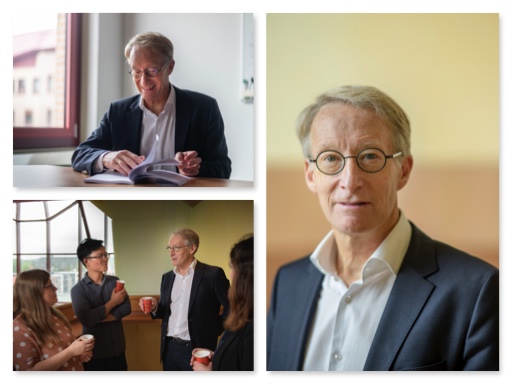Andrew Skidmore improves monitoring of biodiversity
Professor Andrew Skidmore pioneered the use of satellite imagery and other remote sensing technology to monitor plant and animal life across the world. Over the past 35 years he has developed tools for image processing, terrain modelling and machine learning that are widely used across the Earth sciences and in environmental management.
Skidmore commenced his academic career at the University of New South Wales, Sydney, in the Department of Geography and later as the Director of the Centre for Remote Sensing and GIS.
Skidmore has worked at the ITC Faculty of the University Twente for over 20 years, and as Head of Department of Natural Resources for 17 years. For the last 3 years he has worked partly at the University Twente as well as Macquarie University in Sydney, actively coordinating educational and research opportunities for students to visit, study and research in Enschede and Sydney, as well as with other institution and universities in Australia.
He is currently the Remote Sensing Task Force Lead for Group on Earth Observation Biodiversity Observation Network (GEOBON), the Science Advisory Committee for the European Space Agency hyperspectral CHIME satellite, as well as the organizing committee of IGARSS 2021 conference.
Research and Teaching
Skidmore’s interest in research relates to biodiversity and vegetation monitoring under fragmentation, hyperspectral remote sensing, image processing and more general techniques for handling geo-information. He has developed an international reputation in hyperspectral imaging, machine learning, vegetation monitoring, landscape fragmentation and wildlife ecology. He has increasingly focused on monitoring biodiversity using remote sensing. He is the recent recipient of an European Research Council Advanced Grant, allowing him to focus on further improving the monitoring of biodiversity using a fundamentally different approach coupling next generation satellite remote sensing with environmental DNA (eDNA) profiling.
Much of Skidmore’s research has been focused on less developed countries and open access to IP, algorithms and data products. Algorithms he has worked on are now implemented in commercial GIS and image processing software and have been used for image processing across the Earth sciences. Specifically, he has invented and co-developed remote sensing algorithms for modelling terrestrial solar radiation, terrain models, machine learning in Earth sciences (expert systems, artificial neural networks), as well as biodiversity variable retrieval from hyperspectral and LiDAR image data.
Skidmore initiated, and has been active in running, a number of EU Erasmus+ mundus projects at the University Twente, including the highly regarded GEM MSc course and the MSc distance education iGEON with Lund University in Sweden. The recent developments at ITC of a Dutch MSc and undergraduate BSc courses offer further opportunities for EU and Dutch students to undertake cutting edge coursework at ITC.
About Andrew Skidmore
Skidmore started his career working in commercial forestry throughout the 1980s, eventually managing the transition of forestry operations from analogue to digital spatial systems for a team of 30 cartographers and GIS experts for the Forestry Corporation NSW.
His interest focused on design and implementation of novel solutions using GIS and remote sensing systems and integrating emerging spatial data with legacy point-based forest inventory for planning logging, environmental impact assessment, large area forest inventory, wildlife management, and finance.
Skidmore has published widely on species mapping and loss, the impact of climate and land cover change/fragmentation on biodiversity, invasive species and species migration, and more recently work linking DNA and geographical extent.
Skidmore has co-authored many highly cited papers with PhD students and international scientists. His contribution to biodiversity monitoring includes science and policy reports emphasizing the role of remote sensing for the Group on Earth Observation Biodiversity Observation Network, the United Nations Environment Program (UNEP) and European Space Agency.
Press Photos
These press photos can be published without copyright restrictions


